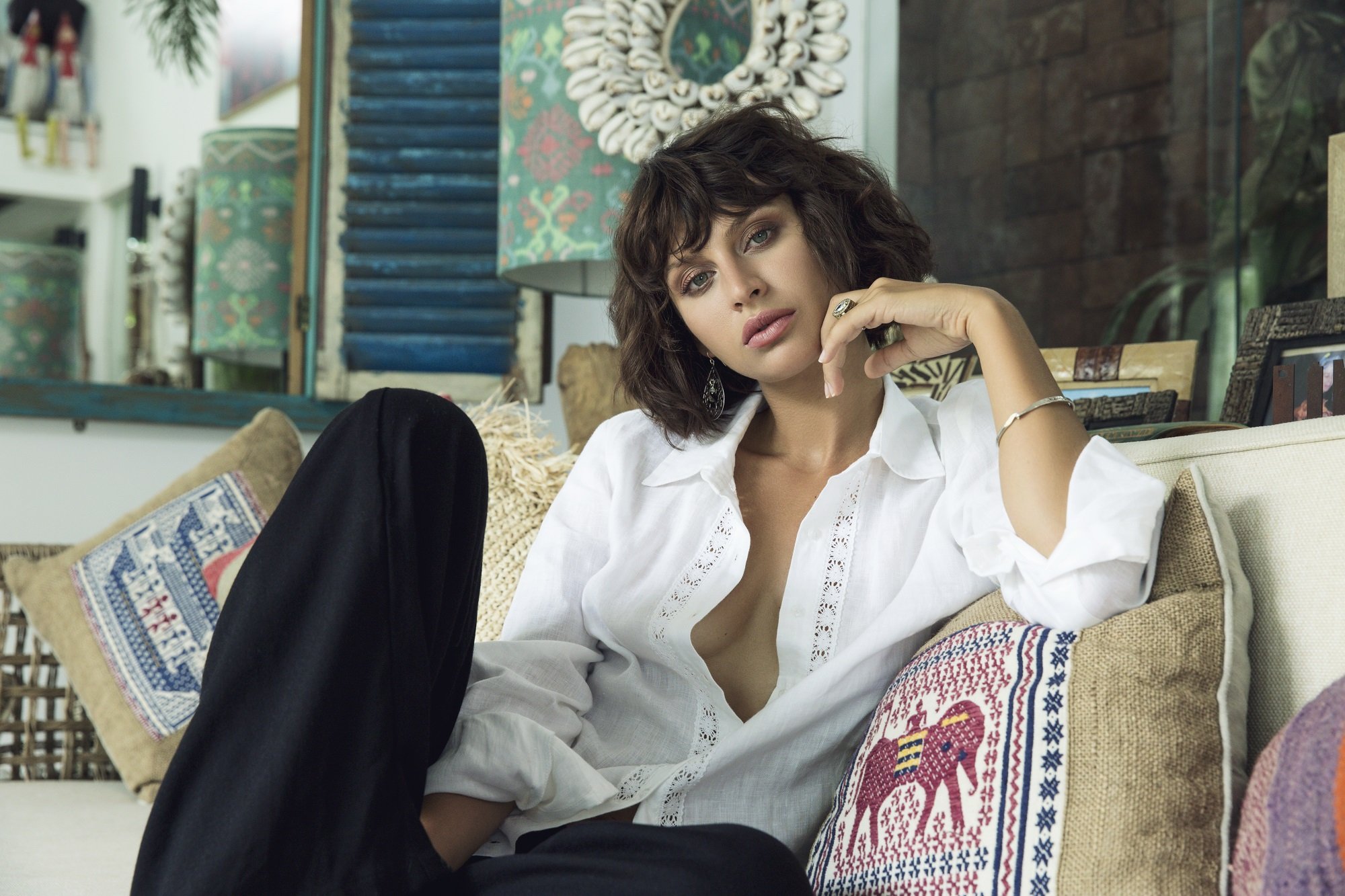 Rachael Levey loved her Fresh Fox boutique in Freshwater on Sydney’s scenic coastal stretch, the Northern Beaches. It was the perfect outlet – indeed exclusive outlet – for her label, charley vella and practically doubled as a social club.“I met so many beautiful people every day and built some great friendships,” she says. “charley vella is aimed at the 30 and over market, but depending on how you style the pieces, it works for all ages. At Fresh Fox, I’d have a mother, daughter and grandmother all buying something.”The boutique that became a local institution closed in early 2018 after three years’ operation – “a heart-breaking decision.” One factor was the uncertainty of the shop lease, but there were more pressing reasons.
Rachael Levey loved her Fresh Fox boutique in Freshwater on Sydney’s scenic coastal stretch, the Northern Beaches. It was the perfect outlet – indeed exclusive outlet – for her label, charley vella and practically doubled as a social club.“I met so many beautiful people every day and built some great friendships,” she says. “charley vella is aimed at the 30 and over market, but depending on how you style the pieces, it works for all ages. At Fresh Fox, I’d have a mother, daughter and grandmother all buying something.”The boutique that became a local institution closed in early 2018 after three years’ operation – “a heart-breaking decision.” One factor was the uncertainty of the shop lease, but there were more pressing reasons.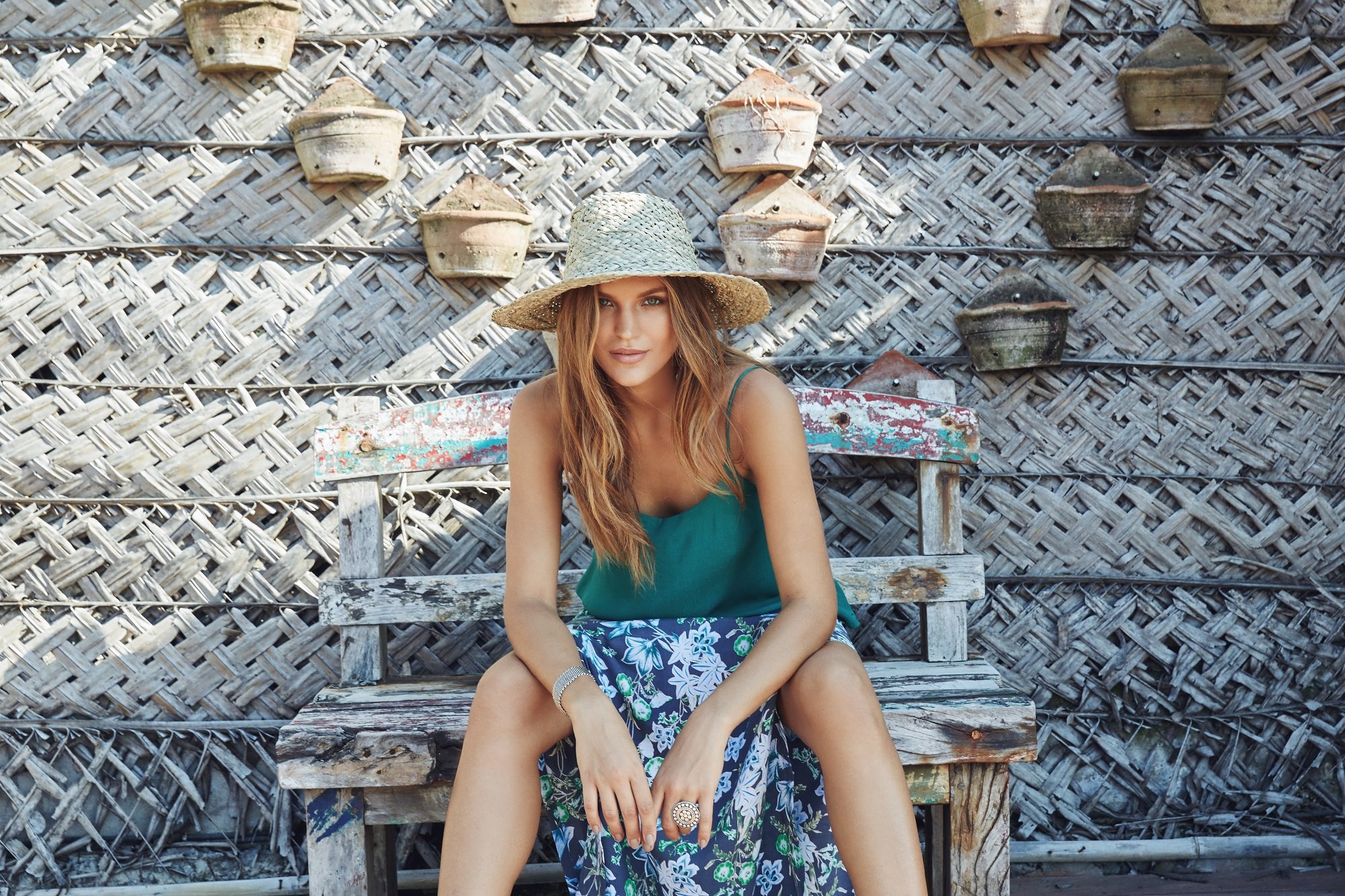 “The demands of running two businesses were taking their toll,” confesses Rachael, who realized that Fresh Fox was draining her of the time and energy needed for design and production – the latter no easy task as charley vella is manufactured in Bali.The Newcastle-born designer’s decision to focus on growing and promoting her label has already borne fruit. charley vella now has outlets in New South Wales, Victoria, Queensland and South Australia, and more stockists are likely after the Sydney 2019 Fashion Exposed Now fair.“I’ll be showing two collections – Autumn/Winter 2019 and Spring/Summer 2019/20,” says Rachael. “I’m very practical when it comes to design. How will this fabric feel on the body and will it wash and wear? Can this piece be worn from beach to bar? Does it need pockets? They’re the sort of questions I ask myself.”The results of that scrutiny are clearly visible. There’s not a hint of fuss or fads in charley vella’s versatile dresses and separates. Subtlety is the operative word – in the flattering shapes, refined palette, dainty prints and occasional decorative touches such lace detail on a classic white shirt.
“The demands of running two businesses were taking their toll,” confesses Rachael, who realized that Fresh Fox was draining her of the time and energy needed for design and production – the latter no easy task as charley vella is manufactured in Bali.The Newcastle-born designer’s decision to focus on growing and promoting her label has already borne fruit. charley vella now has outlets in New South Wales, Victoria, Queensland and South Australia, and more stockists are likely after the Sydney 2019 Fashion Exposed Now fair.“I’ll be showing two collections – Autumn/Winter 2019 and Spring/Summer 2019/20,” says Rachael. “I’m very practical when it comes to design. How will this fabric feel on the body and will it wash and wear? Can this piece be worn from beach to bar? Does it need pockets? They’re the sort of questions I ask myself.”The results of that scrutiny are clearly visible. There’s not a hint of fuss or fads in charley vella’s versatile dresses and separates. Subtlety is the operative word – in the flattering shapes, refined palette, dainty prints and occasional decorative touches such lace detail on a classic white shirt.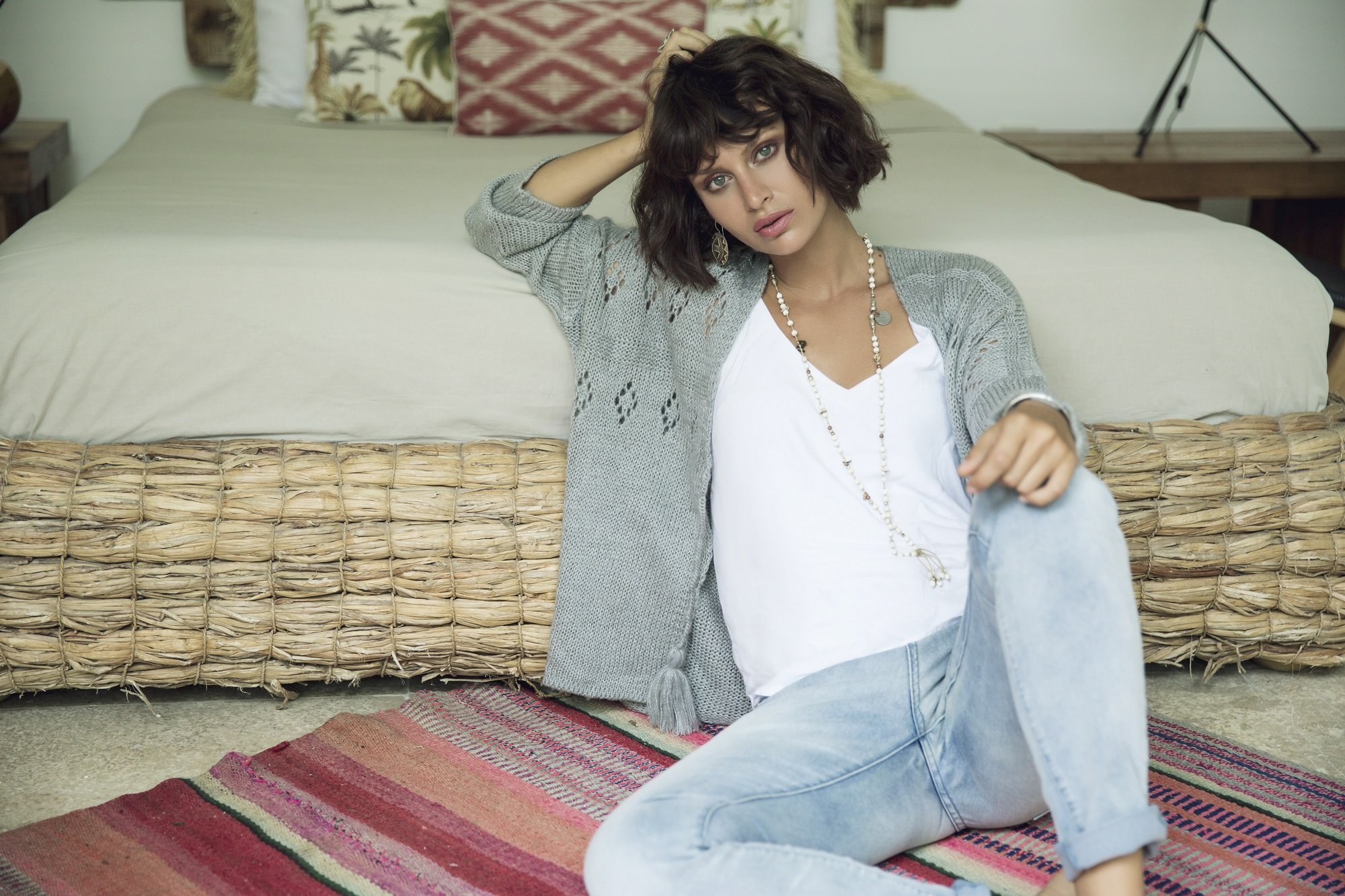 “I cut my first pattern when I was about eight and by high school, I was designing and making my own clothes,” recalls Rachael. “My mother was a great seamstress and we had a massive cache of fabrics at home.”Fashion school seemed the obvious course for the girl who was happiest at her cutting table and sewing machine. Instead she did a BA in business at the University of Newcastle, travelled for a year and ended up working in management positions in Melbourne for eight years.“During that time, I did a design course at the Melbourne School of Fashion and when I moved to (the Northern Beaches’) Manly Vale, I designed and made some skirts for friends,” says Rachael. That was in 2009. By the following year, she was living in Byron Bay. It was there she launched charley vella – a close anagram of her name.
“I cut my first pattern when I was about eight and by high school, I was designing and making my own clothes,” recalls Rachael. “My mother was a great seamstress and we had a massive cache of fabrics at home.”Fashion school seemed the obvious course for the girl who was happiest at her cutting table and sewing machine. Instead she did a BA in business at the University of Newcastle, travelled for a year and ended up working in management positions in Melbourne for eight years.“During that time, I did a design course at the Melbourne School of Fashion and when I moved to (the Northern Beaches’) Manly Vale, I designed and made some skirts for friends,” says Rachael. That was in 2009. By the following year, she was living in Byron Bay. It was there she launched charley vella – a close anagram of her name.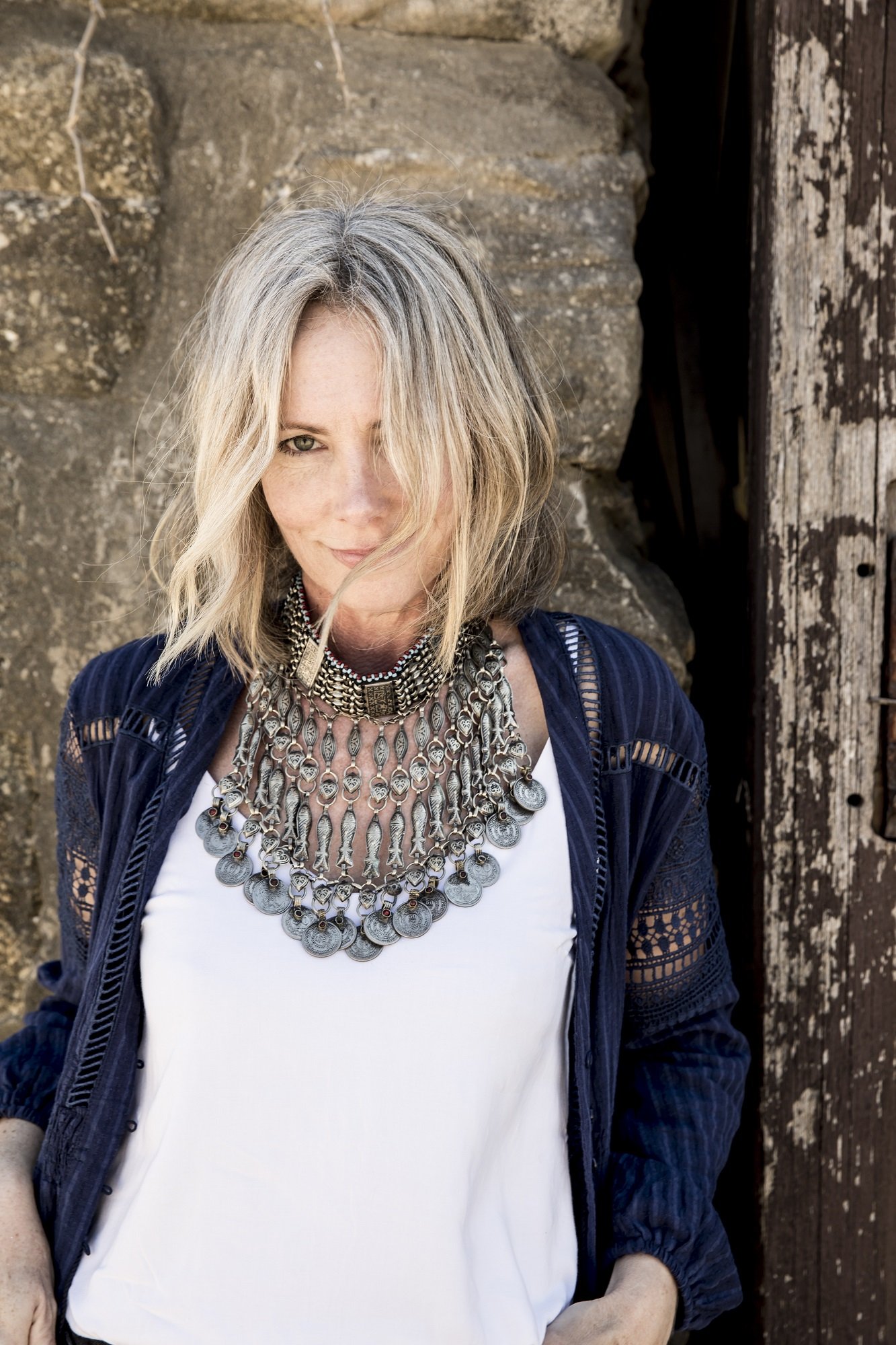 “My label began with a single rack of skirts at the Byron Bay market and I felt terribly anxious because I had no idea if they’d sell, but they did and things grew from there.”The Northern Beaches lifestyle lends itself to the laid-back, feminine style she loves, says Rachael, who references new season trends from Europe and New York, but draws inspiration from numerous sources including her customers.“Often I have a specific woman in mind when I’m designing pieces and choosing fabrics. She’s not necessarily young. There are plenty of gorgeous, stylish women who are in their ‘50s and older.”A Balgowlah warehouse shared with a local artist is the designer’s new base. It may not have Fresh Fox’s ambience, but Northern Beaches fashion fans can look forward to a series of open weekends for the public during the summer.“It’s a fabulous space,” says Rachael Levey. “It will be a very different shopping experience – relaxed and enriching.- Zelda Cawthorne
“My label began with a single rack of skirts at the Byron Bay market and I felt terribly anxious because I had no idea if they’d sell, but they did and things grew from there.”The Northern Beaches lifestyle lends itself to the laid-back, feminine style she loves, says Rachael, who references new season trends from Europe and New York, but draws inspiration from numerous sources including her customers.“Often I have a specific woman in mind when I’m designing pieces and choosing fabrics. She’s not necessarily young. There are plenty of gorgeous, stylish women who are in their ‘50s and older.”A Balgowlah warehouse shared with a local artist is the designer’s new base. It may not have Fresh Fox’s ambience, but Northern Beaches fashion fans can look forward to a series of open weekends for the public during the summer.“It’s a fabulous space,” says Rachael Levey. “It will be a very different shopping experience – relaxed and enriching.- Zelda Cawthorne
Sass Clothing: Triple recipe for success
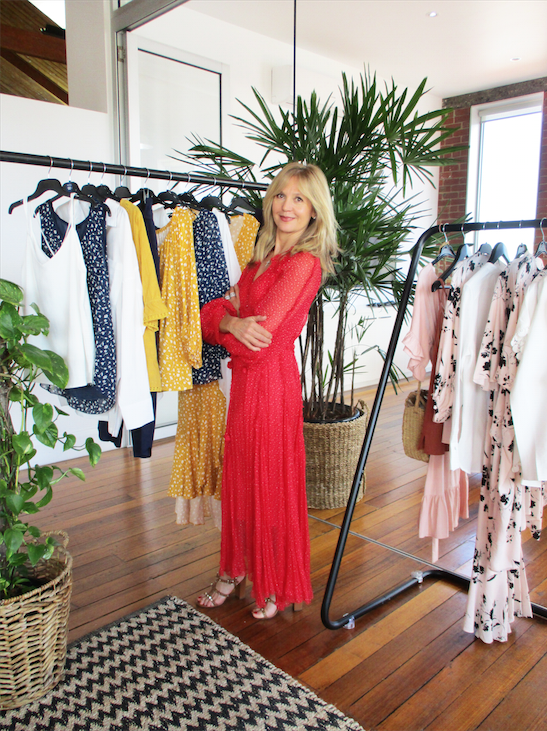 Talitha Becker never aspired to be a designer. It was the business of fashion that drew her and she lost no time in learning the ropes.“I got my first job in retail at 17, straight out of school and worked for Portmans, Sportsgirl and others,” recalls the founder and creative director of Melbourne’s Sass Clothing Group..Its labels - Sass, Fate + Becker and Betty Basics - will feature at the Sydney 2019 Fashion Exposed Now fair and Talitha expects a warm response from buyers.Her optimism is justified. All three labels have proved to be strong performers. And as she points out, “Last year was our best yet.” Given the tough market, that’s a remarkable achievement, especially when you consider that Sass Clothing turned 21 in 2018. “My husband (former banker, Sandy Cameron) suggested I should start my own label,” reveals Talitha at her stylish Collingwood headquarters whose upper level – lots of timber features, exposed brickwork and rich earth colours - is dominated by a large showroom.
Talitha Becker never aspired to be a designer. It was the business of fashion that drew her and she lost no time in learning the ropes.“I got my first job in retail at 17, straight out of school and worked for Portmans, Sportsgirl and others,” recalls the founder and creative director of Melbourne’s Sass Clothing Group..Its labels - Sass, Fate + Becker and Betty Basics - will feature at the Sydney 2019 Fashion Exposed Now fair and Talitha expects a warm response from buyers.Her optimism is justified. All three labels have proved to be strong performers. And as she points out, “Last year was our best yet.” Given the tough market, that’s a remarkable achievement, especially when you consider that Sass Clothing turned 21 in 2018. “My husband (former banker, Sandy Cameron) suggested I should start my own label,” reveals Talitha at her stylish Collingwood headquarters whose upper level – lots of timber features, exposed brickwork and rich earth colours - is dominated by a large showroom.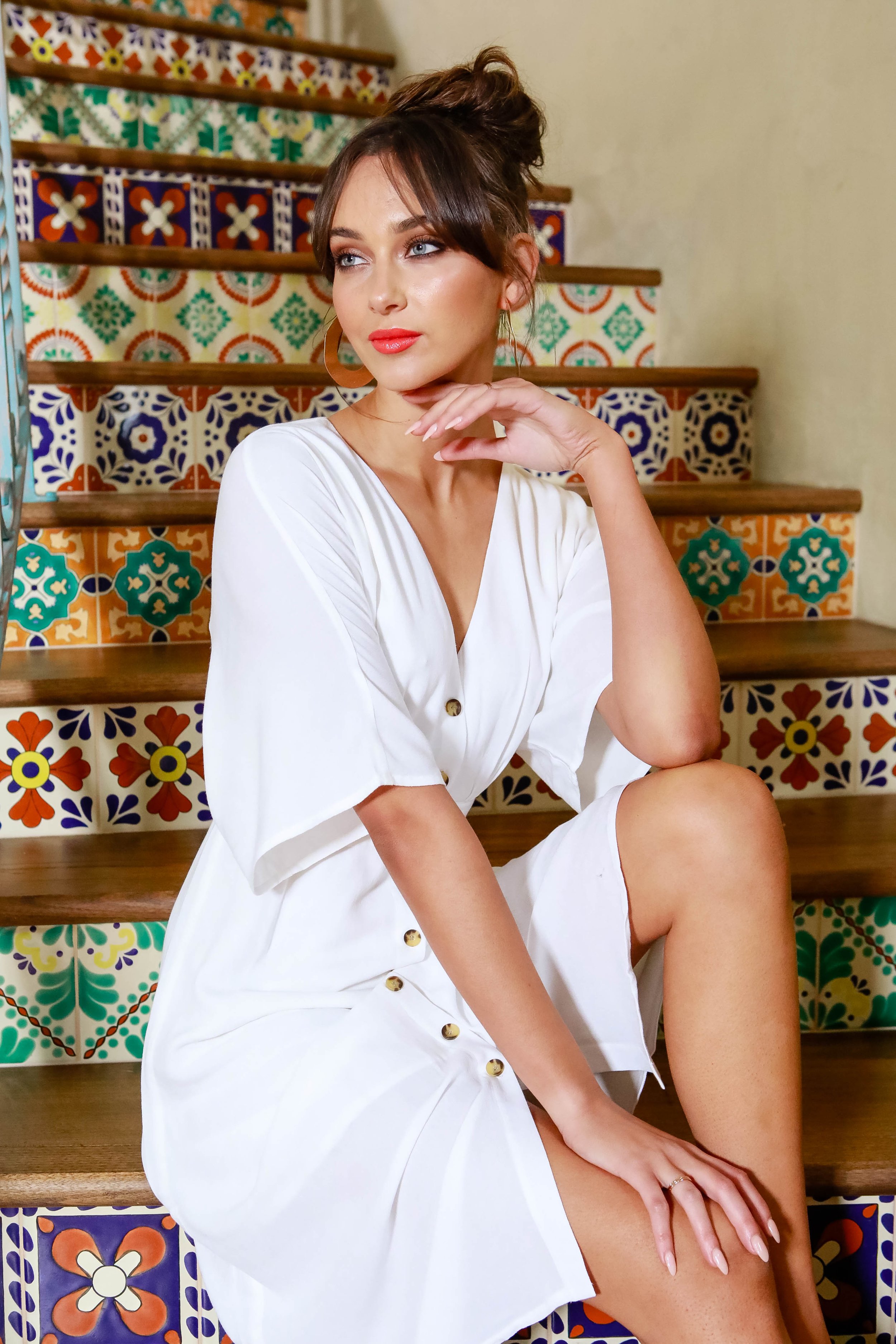 It was a very different scene back in 1997 when she launched Sass. “For the first four years, I ran it from my kitchen bench in Adelaide,” says Talitha. “Sandy had been posted there, but when he was asked to do a second stint, I said, ‘I’m going back to Melbourne.’ “It meant lots of commuting, but hard work paid off and when David Jones picked up Sass, Talitha knew she was on her way.Now the mother of three sons aged 17, 15 and 12, she was raised in Portland, Victoria, by European immigrant parents. “They were practically penniless when they arrived in Australia, but my mother had such flair!” says Talitha. ”That’s what triggered my interest in fashion and in my early 20s, I got my foot in the door when I was hired as a sales rep by the Austin Group – now gone, sadly, but still an icon. Travelling to regional areas and meeting retailers was a great education.”The great mentor turned her next boss, a Melbourne fashion importer who took his protégée to China on buying trips. “He’s a brilliant negotiator and I learned how business was done in cities like Tianjin and Nanjing,” says Talitha.”I’d walk into a meeting and there’d be 10 men there, all of them smoking. I also went on work trips to India. I did those on my own.”
It was a very different scene back in 1997 when she launched Sass. “For the first four years, I ran it from my kitchen bench in Adelaide,” says Talitha. “Sandy had been posted there, but when he was asked to do a second stint, I said, ‘I’m going back to Melbourne.’ “It meant lots of commuting, but hard work paid off and when David Jones picked up Sass, Talitha knew she was on her way.Now the mother of three sons aged 17, 15 and 12, she was raised in Portland, Victoria, by European immigrant parents. “They were practically penniless when they arrived in Australia, but my mother had such flair!” says Talitha. ”That’s what triggered my interest in fashion and in my early 20s, I got my foot in the door when I was hired as a sales rep by the Austin Group – now gone, sadly, but still an icon. Travelling to regional areas and meeting retailers was a great education.”The great mentor turned her next boss, a Melbourne fashion importer who took his protégée to China on buying trips. “He’s a brilliant negotiator and I learned how business was done in cities like Tianjin and Nanjing,” says Talitha.”I’d walk into a meeting and there’d be 10 men there, all of them smoking. I also went on work trips to India. I did those on my own.”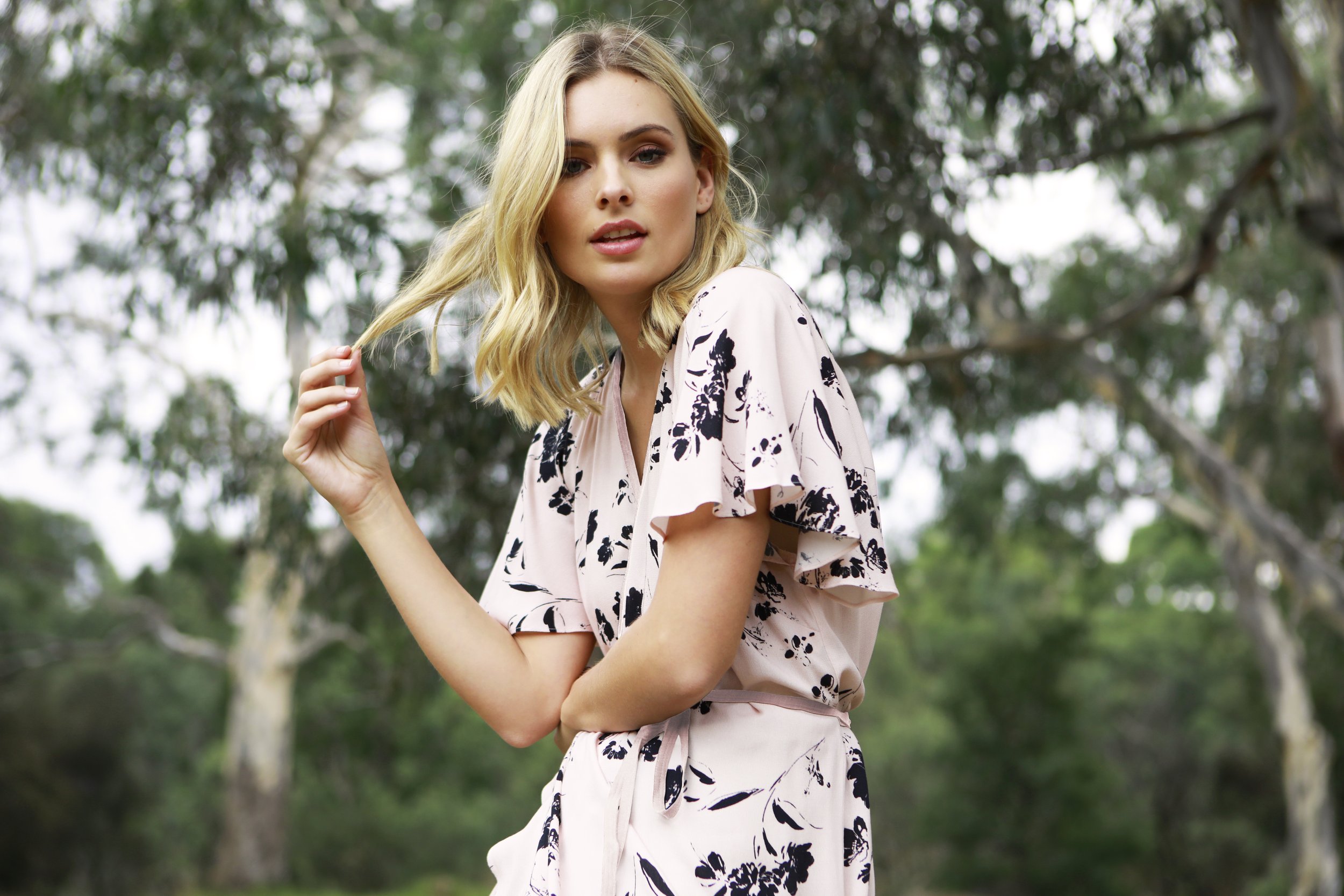 Fate + Becker (originally named Fate) was launched in 2004 and Betty Basics followed in 2010. Like the young, edgy Sass, they are clearly distinctive – Fate + Becker providing timeless chic and Betty Basics devoted to wardrobe essentials which have recently expanded to footwear and accessories.Sass Clothing’s 35-strong core staff includes an all-female design team, while production is handled by both men and women. Leading them are the indefatigable Talitha and Sandy, who quit banking to head up finance, logistics and HR.Regular trips to the world’s fashion hubs are vital for inspiration, says Talitha, who recently returned from New York, Los Angeles, London and Paris. That first-hand immersion is reflected in Sass Clothing’s directional, carefully tuned collections. “You get the look – and good quality - without the sky-high prices.”
Fate + Becker (originally named Fate) was launched in 2004 and Betty Basics followed in 2010. Like the young, edgy Sass, they are clearly distinctive – Fate + Becker providing timeless chic and Betty Basics devoted to wardrobe essentials which have recently expanded to footwear and accessories.Sass Clothing’s 35-strong core staff includes an all-female design team, while production is handled by both men and women. Leading them are the indefatigable Talitha and Sandy, who quit banking to head up finance, logistics and HR.Regular trips to the world’s fashion hubs are vital for inspiration, says Talitha, who recently returned from New York, Los Angeles, London and Paris. That first-hand immersion is reflected in Sass Clothing’s directional, carefully tuned collections. “You get the look – and good quality - without the sky-high prices.”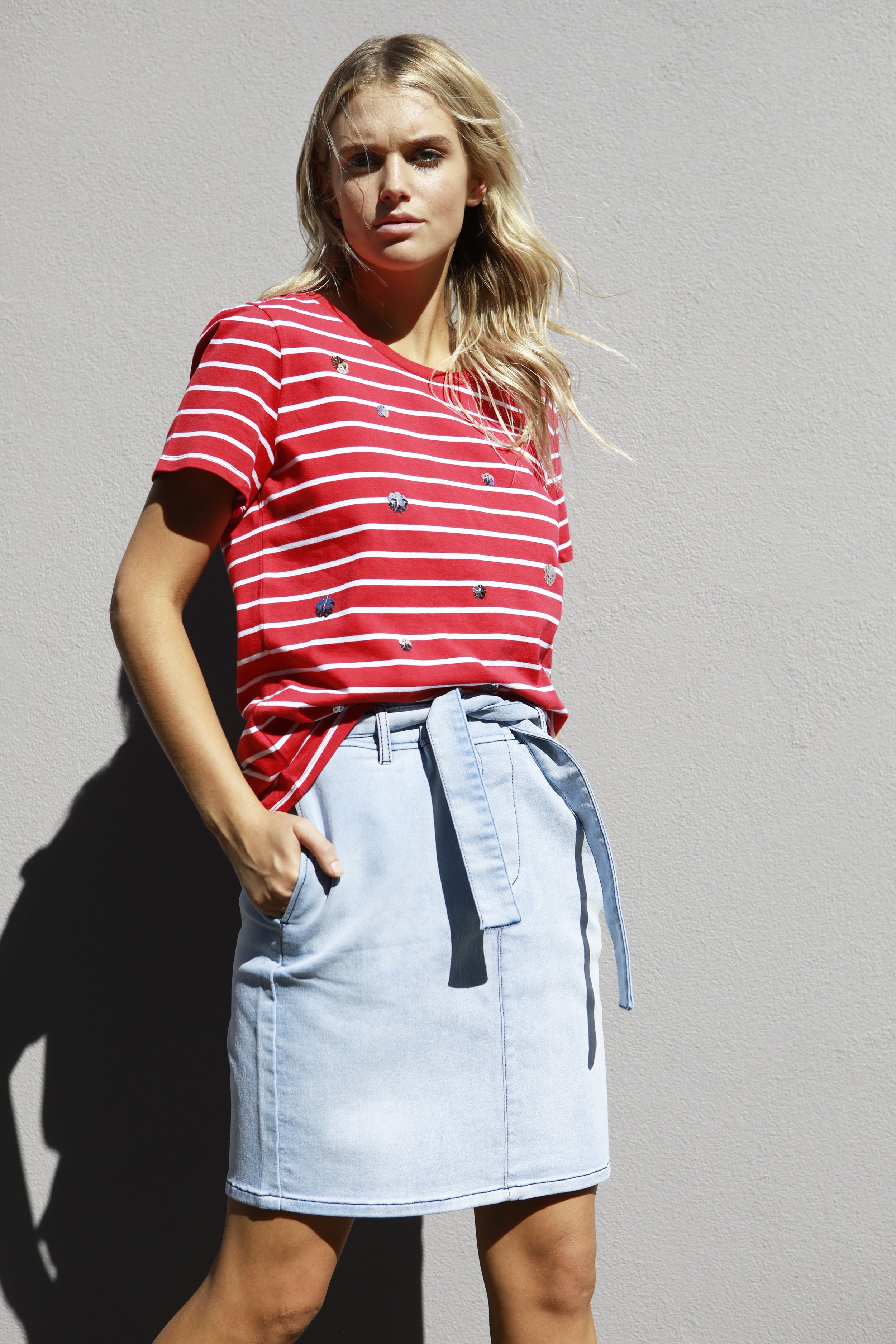 There are lessons to be learned from the company’s longevity. “A lot of young fashion entrepreneurs get carried away, but lack a strong foundation,” notes Talitha. “Typically, they start with a bang and take out loans in order to expand, but when lean times come, they go under.“Our way has always been: Whatever profits you make, reinvest them in your business.”That includes philanthropy. Six months ago, Sass Clothing launched its Betty Care Foundation in collaboration with Melbourne’s Royal Women’s Hospital and plans to take the program across Australia and New Zealand.“Many women including domestic abuse victims arrive at the hospital with only the clothes on their backs, so we created Betty Care fashion basics packs for them,” says Talitha Becker. “We may team up with a skin care company to give the packs an extra boost.”A fourth label is a definite possibility. “We will expand again,” assures the power behind Sass Clothing. “I get itchy feet."- Zelda Cawthorne
There are lessons to be learned from the company’s longevity. “A lot of young fashion entrepreneurs get carried away, but lack a strong foundation,” notes Talitha. “Typically, they start with a bang and take out loans in order to expand, but when lean times come, they go under.“Our way has always been: Whatever profits you make, reinvest them in your business.”That includes philanthropy. Six months ago, Sass Clothing launched its Betty Care Foundation in collaboration with Melbourne’s Royal Women’s Hospital and plans to take the program across Australia and New Zealand.“Many women including domestic abuse victims arrive at the hospital with only the clothes on their backs, so we created Betty Care fashion basics packs for them,” says Talitha Becker. “We may team up with a skin care company to give the packs an extra boost.”A fourth label is a definite possibility. “We will expand again,” assures the power behind Sass Clothing. “I get itchy feet."- Zelda Cawthorne
Tax Tips For Retailers
H&R Block director of tax communications Mark Chapman has some tips for you when it comes to tax time for your store. Running a business is hard enough without getting caught up in the complexities of the tax system.So, to make things simpler, H&R Block has produced a beginners’ guide to the tax deductions all retail businesses should be looking to claim.Purchases of stockEverything that you purchase to sell in your store is tax deductible as a cost-of-sale. In addition, you can also claim for associated costs of getting stock delivered from suppliers as well as other costs of sale such as delivery charges to customers (if you pay them rather than the customer), packing, etc.If you travel to trade fairs to examine new products, those costs are also deductible.Write-off any lost, damaged or obsolete stock before the year end in order to claim a tax deduction.Immediate write-off of capital purchases Through until 30 June 2018, your business can claim an immediate tax deduction for all capital purchases which cost less than $20,000, rather than writing off the cost over several years. That could be a great way to refresh your store and generate some extra cash flow. To qualify, your business must be a small business (ie, with an aggregate turnover or less than $10 million.Amongst the items you could look at claiming are the following:
- Cash registers and other POS devices
- Delivery vans
- Store fittings and fixtures
- Computers, laptops and tablets
- In store security systems
- Accounting software
Meet The Buyers: Mareile Osthus
In this series, we meet industry buyers from across Australia and New Zealand. Here, The Iconic chief category manager Mareile Osthus reveals the power of independent brands.How many womenswear labels does The Iconic stock?Currently, we stock more than 600 womenswear brands and the number increases each week. We want to make sure that we have something for all of our customers in ANZ, bringing them the best local and international brands.What are some of the best performing niche/independent labels?We are very proud of every single brand we are able to offer to our customers, but a few of our more niche brands that are well-received by our customers are: FLYNN, ATP, Loeffler Randall, Chimi Eyewear, Jerome Dreyfuss, Linda Farrow, Georgia Alice and Manning Cartell.What about in the accessories space?Accessories are driven by the consumer’s need to convey individuality and is one of our fastest growing areas, particularly regarding handbags, jewellery and sunglasses. Some niche brands within the space which our customers love are Reliquia, By Charlotte, Brie Leon, Johnny Loves Rosie, The Wolf Gang and Shevoke.How do you source new brands - where do you find them?We source brands from all over the world, from Europe to the US as well as more local brands we find in the ANZ region. Our teams are constantly travelling to find the best brands for our customers; we just came back from a Europe trip to London, Paris and Milan, and acquired 60 new brands. We are looking forward to being able to offer these brands to our customers very soon.What do you look for when you're buying?The first thing we do is listen to our customer. In an online business, it's easy to see what our shoppers are searching for. We then combine this with our trend buyer’s knowledge to assess what customers want to shop in the future, as there’s even a chance they don't even know it yet.What tips would you give to designers for attracting the attention of a buyer?It's usually important to show the point of difference to the customer, so what makes your product different from others?There are so many great brands out there and the online shopping space is such a competitive environment so its important to stand out. One area that The Iconic is deeply committed to is social and environmental responsibility, and it is something we are seeing is also becoming increasingly important to our customers.What are some best performing trends of the season?This season we are selling a lot of fake fur jackets, leopard print, printed boots, slides, hoop earrings, jewellery with religious motifs, cat eye sunglasses, cross body bags, slogan tees, blazers and pink, lilac and wide leg trousers.What do you predict will be the best trends next season?Pink, pink and more pink, fluro colours, more animal prints, silk, natural fabrics, turbans, visors, coloured sunglasses, top handle bags, sunnies and micro bags. The latter look fab, even though they might not be very functional! Footwear is heading in two different directions; on one side we will be heavily influenced by Kim Kardashians perspex-style shoes and barely there footwear, and on the other, we will be wearing very simple-styled mules and sandals in earthy-toned leathers and fabrics.What is the best part about being a buyer?I’ve always liked the excitement of trends, at the same time as optimising the portfolio in regards to timings, shares of sub-categories and big bets on top items. It has to do with a lot of analytics as well as gut feel and this is an unbeatable combination. It is very rewarding as a buyer to see your product selection come to life and sell well, as it means you are satisfying the customer which at the end of the day is our number one objective. It is really important to be customer centric in all decisions to ensure you get the best results!What is the most challenging?Juggling the past, present and future is always a challenge. The uncertainty of the popularity of trends is the most challenging part of our business. We buy about six months ahead, with the risk of not knowing exactly what will happen next season and how the the market situation will be, as customer needs can change very quickly and they can be difficult to predict.As a buyer, you need to be ready to switch heads at any given time. Whilst looking ahead to capture the next trends, you must also look back at the last six months to analyse and determine what should be purchased in the future, whilst also looking at current trade, drive opportunities and mitigating risks.Assia Benmedjdoub, Editor, Ragtrader Magazine




